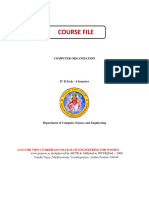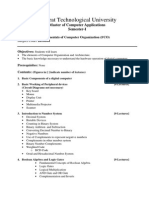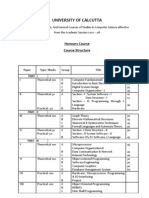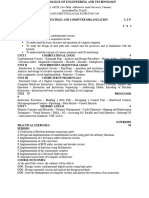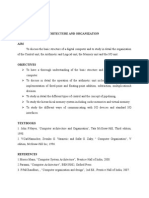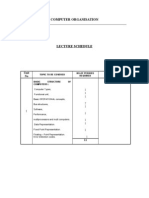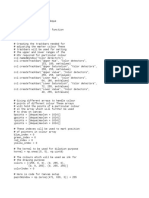0% found this document useful (0 votes)
9 views1 pageSyllabus
The document outlines the curriculum for a course on data representation, digital logic circuits, computer architecture, arithmetic operations, memory organization, and input/output systems. It covers topics such as binary numbers, logic gates, computer types, processor organization, and memory management. Each unit delves into fundamental concepts and practical applications relevant to computer systems.
Uploaded by
Ramesh BabuCopyright
© © All Rights Reserved
We take content rights seriously. If you suspect this is your content, claim it here.
Available Formats
Download as DOCX, PDF, TXT or read online on Scribd
0% found this document useful (0 votes)
9 views1 pageSyllabus
The document outlines the curriculum for a course on data representation, digital logic circuits, computer architecture, arithmetic operations, memory organization, and input/output systems. It covers topics such as binary numbers, logic gates, computer types, processor organization, and memory management. Each unit delves into fundamental concepts and practical applications relevant to computer systems.
Uploaded by
Ramesh BabuCopyright
© © All Rights Reserved
We take content rights seriously. If you suspect this is your content, claim it here.
Available Formats
Download as DOCX, PDF, TXT or read online on Scribd
/ 1


